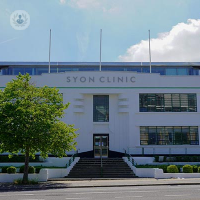Venous ulcer
Professor Alun Davies - Vascular surgery
Created on: 11-13-2012
Updated on: 12-01-2023
Edited by: Conor Lynch
What are venous ulcers?
Venous ulcers are sores that develop on the legs due to problems with blood circulation through the veins of the leg and minor injury. The problems with blood flow can result in blood pressure in the veins increasing which eventually damages the tiny blood vessels in the skin, which if knocked or scratched, can easily break and form an ulcer.
What are the symptoms of venous ulcers?
The main symptoms of venous leg ulcers are:
- Swollen ankles
- Pain and heaviness in the legs
- Brown spots on the legs
- Itchy, red skin on the legs
- Bad-smelling discharge from the ulcers
- Skin around the ulcer can be hardened
If the ulcer becomes infected pain would worsen, discharge from the ulcer would be green and smell very unpleasant and you might have a fever. If infection occurs, medical attention is important.
What causes venous ulcers?
As mentioned, venous leg ulcers are caused by damage to tiny blood vessels of the leg skin, which when damaged results in ulcers. The risk factors for developing venous leg ulcers are:
- Obese and overweight people, as more pressure is on their leg veins.
- People who have difficulty walking as circulation in their legs is poor.
- People with varicose veins (caused by damaged vein valves).
- Older people
- Previous injury which limits movement and can cause deep vein thrombosis (DVT).
Can venous ulcers be prevented?
There are certain preventative measures, especially in those people who are predisposed to venous ulcers that can reduce the chances of ulcers forming, including:
- Hygiene – maintaining cleanliness of the legs and feet.
- Maintaining a healthy diet
- Compression stockings to help improve blood flow in the legs.
- Losing weight if you are overweight
- Treating underlying problems, such as varicose veins.
How are venous ulcers treated?
Venous leg ulcers can take up to four months to completely heal. The first step with an ulcer is clean and dress it properly, being careful that any dead tissue is removed. The next step is to improve the flow of blood using various compression techniques, such as compression bandages or stockings.
Swelling caused by the ulcers in the feet and ankles (oedema) can also be controlled by compression bandages. Itchy skin around the ulcers can be improved using emollient cream or corticosteroid cream. Infected ulcers will be treated with antibiotics as well.







